Renewable Energy has to be Stored. These Researchers are Figuring out How.
Go behind the scenes at one of the Columbia Electrochemical Energy Center’s labs, where researchers are developing the next generation of batteries, fuel cells, and electrolyzers.
Addressing the climate crisis means redeveloping our energy system to run on renewable sources of energy, like wind and solar. Many of the most difficult technical and economic aspects of this vital challenge have been solved, but there’s a key area where fossil fuels’ advantages make them especially difficult to replace: storage.
The reason is that oil, coal, and natural gas are extremely dense with energy, which makes them easy to store, transport, and use. Wind and solar energy are now cheaper than power generated from fossil fuels, but they require specific weather conditions. We need safe and efficient ways to store renewably generated energy to use when the wind stops blowing, when clouds form in the sky, and when demand for electricity jumps higher than normal.
That’s why the Columbia Electrochemical Energy Center (CEEC) is dedicated to developing strategies and technologies to advance energy storage and conversion using batteries, fuel cells, and electrolyzers in transformative ways.
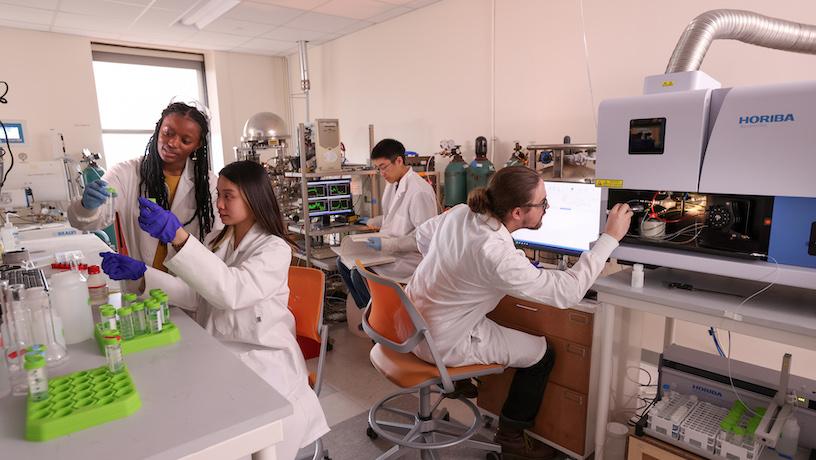
Graduate students working in a CEEC shared lab investigating electrochemical energy storage and conversion technologies for EV batteries, sustainable fuels, and metals processing.
Clockwise from left to right: Phuong (Lisa) Nguyen, Daniela Asifiwe Bushiri, Hansen Mou, and Curtis Sirkoch.
Credit: John Abbott/Columbia Engineering
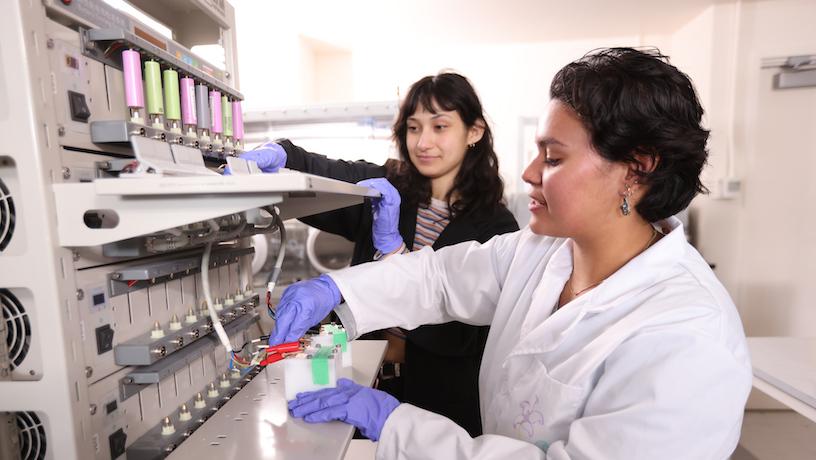
Natalie and Kristina (foreground) cycling individual battery cells to study performance, aging, and safety.
Credit: John Abbott/Columbia Engineering
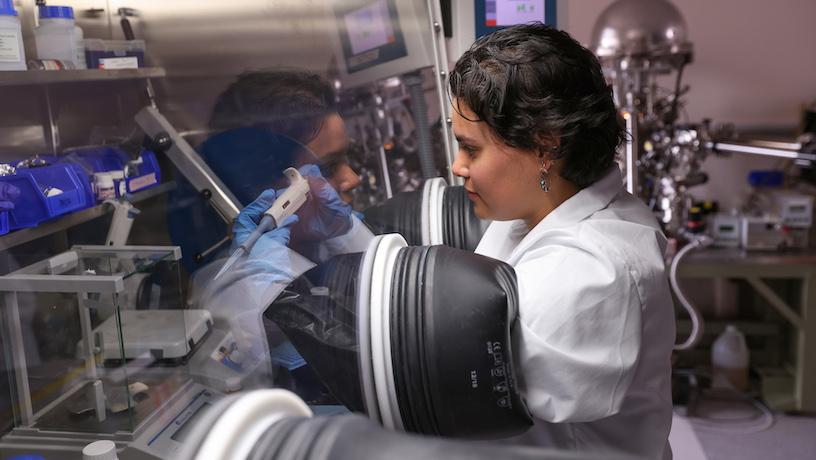
Kristina working in an oxygen-free “glove-box”, filling pouch cell batteries with the electrolytes that facilitate lithium ion movement during charge and discharge within the battery. New electrolyte designs aim to improve battery safety, extend battery lifetimes, and optimize battery performance during fast-charging.
Credit: John Abbott/Columbia Engineering
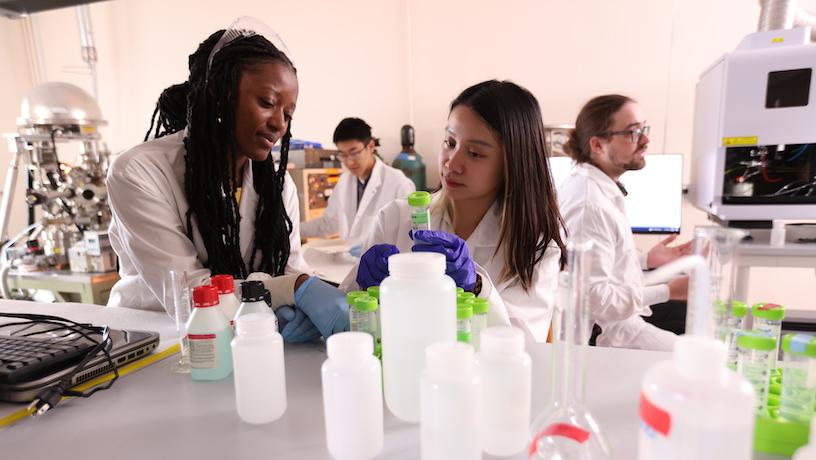
Daniela (left) and Lisa preparing samples for one of CEEC’s industry partners. CEEC faculty and their students engage in research projects with industry as partners on government grants or companies can directly sponsor research in CEEC labs. These partnerships ensure that the CEEC focuses on industry-relevant projects that address real-world challenges to scaling and accelerating the adoption of electrochemical energy technologies.
Credit: John Abbott/Columbia Engineering
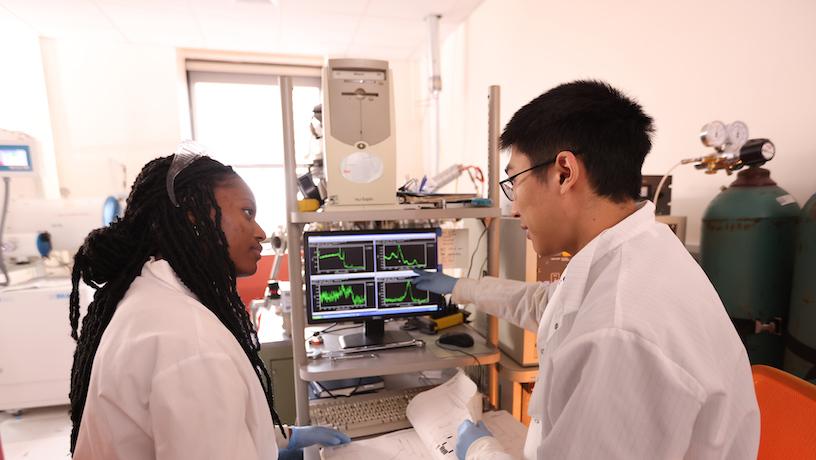
Daniela and Hansen review x-ray photoelectron spectroscopy data of catalyst materials for green hydrogen generation and CO2 conversion to fuels such as methane and methanol. These data can reveal how the chemical identity and arrangements of atoms at the catalyst surface relates to catalyst performance, passivation, and poisoning.
Credit: John Abbott/Columbia Engineering
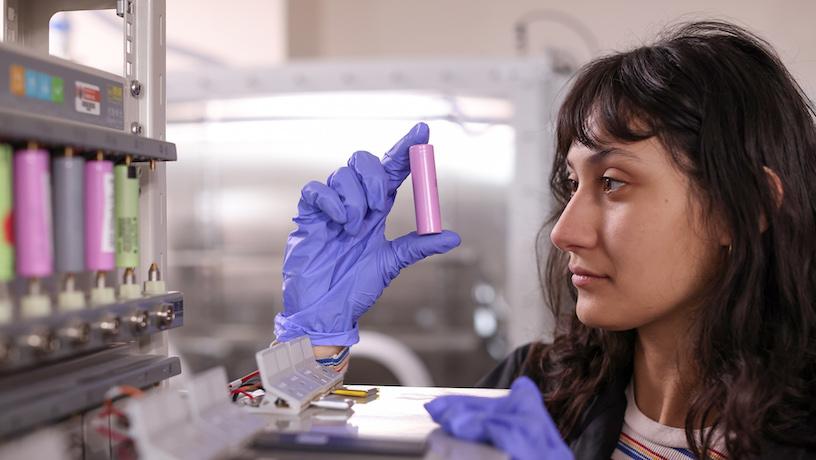
Natalie inspecting an 18650-format lithium-ion battery as part of a battery aging study. By understanding how batteries fade and fail with age, we can design better batteries and better systems to manage battery health.
Credit: John Abbott/Columbia Engineering
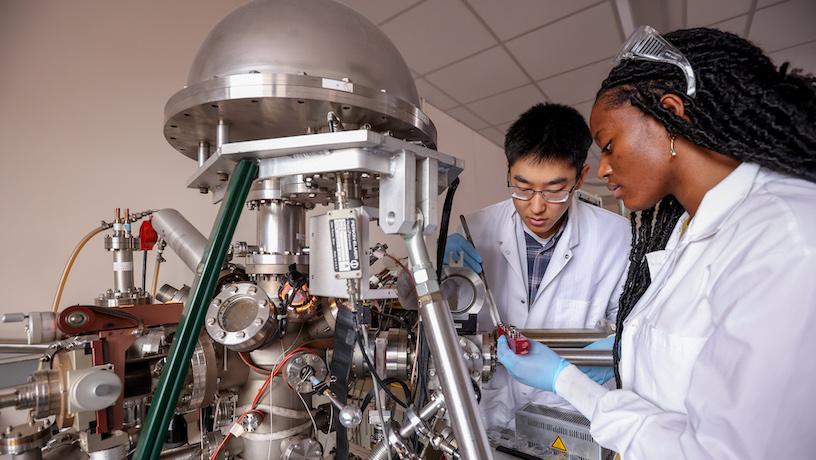
Daniela and Hansen load samples into the x-ray photoelectron spectrometer in order to understand why certain materials more efficiently convert H2 and CO2 into sustainable fuels. These conversion reactions happen when H2 and CO2 interact with atoms exposed at the surface of the catalyst. This machine is especially useful because it only collects data about these atoms on the surface.
Credit: John Abbott/Columbia Engineering
